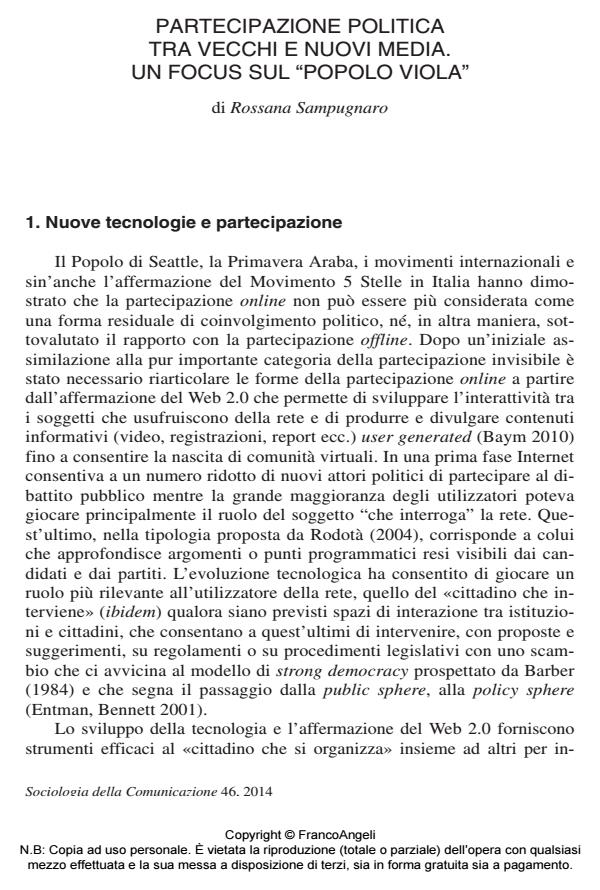Partecipazione politica tra vecchi e nuovi media. Un focus sul "popolo viola"
Titolo Rivista SOCIOLOGIA DELLA COMUNICAZIONE
Autori/Curatori Rossana Sampugnaro
Anno di pubblicazione 2014 Fascicolo 2013/46
Lingua Italiano Numero pagine 28 P. 150-177 Dimensione file 1228 KB
DOI 10.3280/SC2013-046010
Il DOI è il codice a barre della proprietà intellettuale: per saperne di più
clicca qui
Qui sotto puoi vedere in anteprima la prima pagina di questo articolo.
Se questo articolo ti interessa, lo puoi acquistare (e scaricare in formato pdf) seguendo le facili indicazioni per acquistare il download credit. Acquista Download Credits per scaricare questo Articolo in formato PDF

FrancoAngeli è membro della Publishers International Linking Association, Inc (PILA)associazione indipendente e non profit per facilitare (attraverso i servizi tecnologici implementati da CrossRef.org) l’accesso degli studiosi ai contenuti digitali nelle pubblicazioni professionali e scientifiche
Il Popolo di Seattle e i movimenti internazionali hanno dimostrato che la partecipazione online non può essere più considerata come una forma residuale di coinvolgimento politico, né, in altra maniera, sottovalutato il rapporto con la partecipazione offline. Divisi tra l’ipotesi del rinforzo e quella della mobilitazione, gli studi scientifici convergono nell’attribuire rilevanza all’apertura di nuovi spazi di partecipazione politica sulla rete. All’interno di questo ambito, si colloca l’indagine sul Popolo Viola - un movimento nato e cresciuto sul web - capace di imporre la sua agenda per un breve lasso di tempo ai media tradizionali. Aldilà dei semplificatori frame interpretativi della stampa, lo studio del profilo socio-demografico e politico di una selezione di partecipanti e l’analisi del loro menu mediale restituisce un quadro complesso del rapporto tra online e offline dove, più che cesure, si intravedono continuità.
Parole chiave:Partecipazione politica, attivismo digitale, Popolo Viola.
Rossana Sampugnaro, Partecipazione politica tra vecchi e nuovi media. Un focus sul "popolo viola" in "SOCIOLOGIA DELLA COMUNICAZIONE " 46/2013, pp 150-177, DOI: 10.3280/SC2013-046010